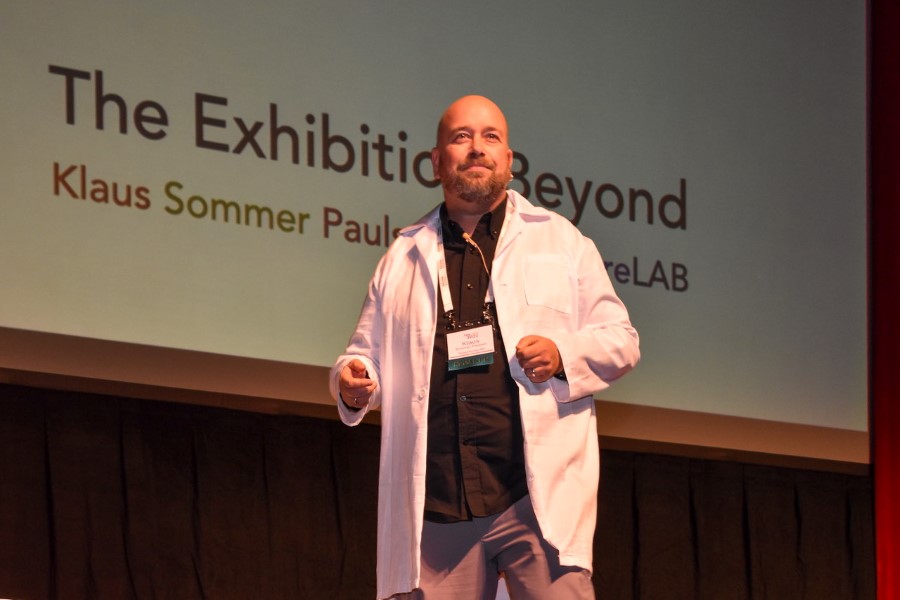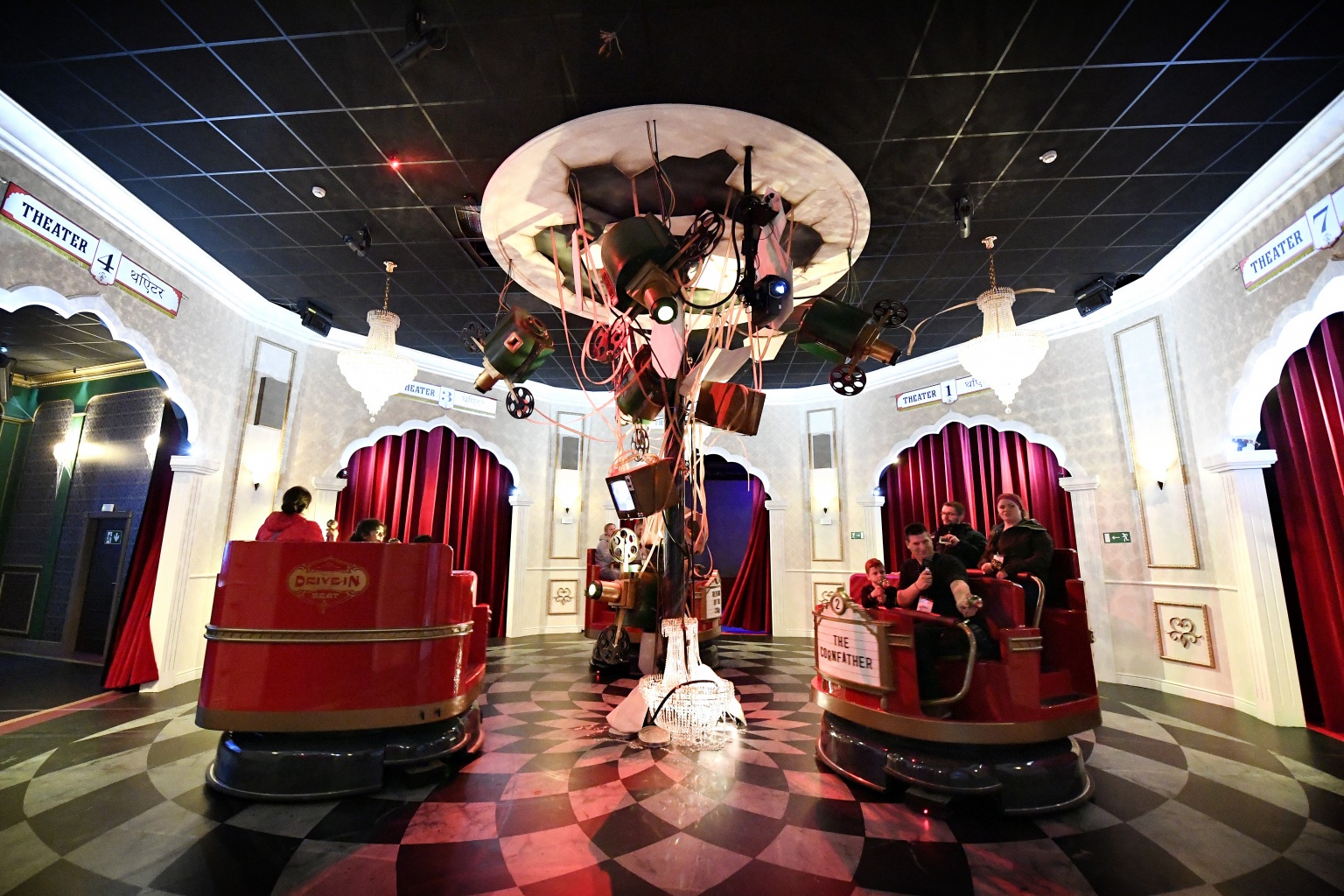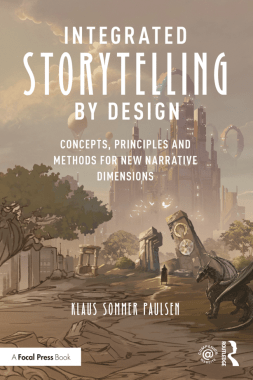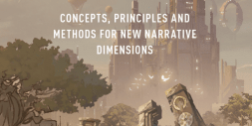If you missed the opportunity to listen to Klaus Sommer Paulsen‘s great lecture “Integrating Story Experience Design in the Next Generation of Themed and Branded Experiences” at Prolight + Sound 2023 on Friday morning, now is your chance to read our recent interview with him.
Adventure and creativity are not just empty phrases at AdventureLAB, but actually central to their work. Founded by the innovative mind of Klaus Sommer Paulsen, AdventureLAB is a Denmark-based company specialising in immersive and interactive experience design. The multidisciplinary studio uses the intersection of storytelling, theme development, game mechanics and technology to create unique, customer-centric experiences.
Klaus Sommer Paulsen, the founder and CEO of AdventureLAB, is known for his creative skills and visionary approach. As a seasoned professional in the experience industry and experience industry, he has overseen and designed a number of projects around the world. As well as being an avid storyteller and designer, Paulsen is also an inspirational speaker, sharing his expertise and insights at numerous industry conferences and events.

Klaus Sommer Paulsen hält einen Vortrag auf der SATE Konferenz in Las Vegas 2022
Today we are lucky enough to have an interview with the dynamic and inspiring Klaus Sommer Paulsen. Get ready to dive into a world of creativity that crosses boundaries and redefines the way we understand and design experiences.
A general question: What can good storytelling do to bring the visitor experience to a new level?
Good storytelling adds depth and richness to the experience. It creates a special connection with the audience, who may recognise themes, characters or even themselves in the storyline. With a proper story, there is often more foundation or direction, and in themed entertainment, you will often hear designers, engineers, and other professionals ask the same question to base their work on: What is the story? Usually, when I work with the equivalent of script doctoring in movies – making the core story and concept more defined and pronounced for the experience- it is to clean up and prioritise what should be part of the experience for everyone on the team to do their best work. Too many fragmented ideas create confusion among both the creators and their audiences. The power of storytelling in visitor experiences is its capability to be the heart of the experience and a pathway of inspiration for the team to develop new ideas as part of a strong, well-defined concept.
What can the live entertainment industry, which showcases itself at Prolight + Sound, learn from the themed attractions industry in terms of storytelling?
How powerful and impactful a live experience can become when you combine storytelling with experience design to create themed or branded experiences that we can invite people into. The combination amplifies the audience’s immersion, relatability, and engagement because it is about much more than the spatial setting, sound, image, fire, water, etc. All of these elements can surely enhance the story. At the same time, their effect can be improved when they are an integrated part of a narrative, so the amplification goes both ways.
Furthermore, it is essential that storytelling is more than the somewhat narrow perception of spoken or written words, which is often why some experience professionals tend to shy away from it to avoid the addition of an overly complex and redundant narrative. Stories can be told with space, through audience action and all of the enhancements mentioned in designs that can aptly be described as storytelling without words. The multiple layers make up the themed experience that can present a narrative in new and exciting ways.
What are the different approaches to storytelling that can be applied to the entertainment industry?
There are too many to mention in a single article or an interview. Not at least because you can multiply each approach with the different ways story professionals work. When somebody introduces themselves as a storyteller, I am always curious to discover what kind of storyteller they are. Writing a show or a novella is not the same thing. However, if we are to focus on the live experience, a few different key approaches come to mind. Choosing between them as part of a creative strategy can have a significant impact on the outcome of how your story is experienced. And, after all, is that not what live entertainment is all about; enhancing how the story is brought to life in front of or around the audience?
Adaptive Storytelling: Great stories can be adapted from their original media to live experiences with much success – and obviously, to the disappointment and even frustration of audiences and the creator of the original story. The most successful adaptions we see on stage and in theme parks are those where the creative team knows and understands it is an adaption. They maintain a connection to and respect for the original story while realising that it has to work in another setting or platform, utilising the new characteristics to enhance the story experience.
No, it is not entirely like the original source material, nor should it be. It has to be a successful adaption to another format.
Immersive Storytelling: Related to theme parks and other places where the audience can enter the world of the story – the storyworld – Immersive Storytelling is more than an amalgamation of current buzzwords. It is a narrative form that makes use of having the audience surrounded by the story. When used to the full extent, being immersed becomes part of the story experience, and in doing so, we tell stories around the audience and how the audience feels immersed from within. What happens to people when surrounded by or even taking to the stage to partake in the events on it? Exploring this answer uncovers ideas of audiences interacting with both story, space and other audience members.
Interactive Storytelling: Sometimes, we hear the question of whether a story can be interactive. The answer is not yes or no. Rather than asking if a story can be interactive, one should ask how it can be interactive. There are multiple ways to apply interactive and audience influence to story experiences, including live events, which enhance every show’s uniqueness. The interaction can happen in real-time, like when audiences respond to questions that create dynamic storylines or even choose directions in branched storylines. There is a veritable goldmine of inspiration from improv theatre that can be combined with different disciplines and technologies to blur the line between storyteller and audience, giving the latter some influence over the unfolding of the story experience.
Transmedia Storytelling: Stories can manifest themselves in different locations and platforms. As with Adaptive Storytelling, it is more than merely replicating content from one medium or site to another. The richness comes from understanding and applying the power of diversity and differences from one place to the next. In addition, the story elements can be presented from different perspectives and can even be completely different from one point of audience engagement to the next. Some entertainment franchises do this very well. When seeing the film, reading the comics, and playing the game all complement each other.
When conceptualising and producing a live experience, one can explore different dimensions in time, place and layers. What happens before and during the show, such as when the story begins at home? How can different locations, meters or kilometres apart, be combined in a multi—location experience? How can the combination of digital and virtual be merged into an enhanced hybrid story experience? Once you start thinking this way, you realise that you can go beyond the singular narrative, working with a string of interrelated storylines that adds to the richness of the universe of stories you create and combine – the storyverse.
Story Retelling: The final example of storytelling is related to the concept of audience-centric storytelling: when you design the story experience with the audience at the centre of your story or storyverse as both visitors and contributors. As experience designers, we are memory creators. Story Retelling is about making sure that you keep the audiences of your audience in mind when their memories are shared. The story experience you created and invited people into becomes a story in itself, and you have to consider Why that story is worth sharing? What can you do to help your audience share it? What elements will you provide to enhance the retelling of your story by others? This goes way beyond that potentially viral video clip that you share online. It is about giving your audience inspiration and freedom to tell the kind of stories you would like them to tell while accepting giving up some control as your storyverse expands with the input from audiences that become storytellers in their own right.
You are the head of the Integrated Storytelling and Experience Design Studio AdventureLAB. Tell us something about your work: What exciting projects have you been in charge of?
I feel very blessed to have worked with so many great people on so many great projects, and each and every year, there are new projects, big or small, that I am very proud of having been involved with. AdventureLAB is very focused on the fundamental creative strategy, concept, story and experience design, so often, we work early in a project – or to help reboot a project – by helping set a direction for everyone on the team, internal or external, to work with. Everyone will be given a common language and understanding regardless of their discipline. Through facilitation, we work to provide all key team members with a chance to weigh in with their ideas and expertise. Sometimes the outcomes are temporary experiences, and sometimes they are permanent. Sometimes the focus is on the audience experience of a brand, and sometimes they are dedicated to advancing the brand from within through team and leadership training. And sometimes, they are a combination of many, if not all of the above.
Because of the nature of the projects, they are often shrouded in secrecy, and there are many I would love to talk about, but I’ll have to wait months or years before I can share them with anyone. But I can still mention a few, and I have chosen some that reflect some of the different frameworks suited for themed experiences: Attractions, cultural heritage and live events.

Popcorn Revenge © Alterface
Popcorn Revenge is a non-linear dark ride placed in Walibu, Belgium, that was the first of its kind when it launched. A dark ride is an industry term for an indoor ride where visitors are completely immersed in the environment enhanced with media, animatronics, scenography etc. – often exciting places for AV designs and installation. I worked with Alterface in Belgium on this one, my role being focused on the story design and some other creative work. What intrigued me was that it was non-linear, had to work without spoken narrative and in multiple ways challenged the traditional dark ride concept. Popcorn Revenge won a THEA award and is opening in Japan this year, and I’m very proud of it. And most importantly to the visitors, it is great, silly fun!
The Hidden Tragedy is a new mobile storytelling experience recently launched as a preliminary, soft-launch version in Sweden. I have worked with storytelling on mobile devices for about 15 years, and designing story experiences anchored in multiple locations is another approach to storytelling with particular demands in terms of context considerations. We also launched another mission-based story experience on the island of Bornholm in Denmark this year, which I am also very proud of. Still, I am mentioning The Hidden Tragedy because of its multifaceted and layered creative strategy and story design.
It is a modular, non-linear tour where each location-anchored piece of the story adds richness and understanding to the total experience. Focusing on witch trials and the executions they resulted in during the 1670s could easily have become a dark tourism horror story. With Västernorrland’s Museum overall responsible for the project, a multidisciplinary team has created a tour that balances the presentation of historical facts with storytelling, proving that good storytelling does not have to be fiction.
Lost in Translation – Know the Power of Diversity was an event we did in Tokyo some years back. I entered digital multimedia in the 1990s, mostly doing shows and events, and have been on stage innumerable times, so the live events and performances are very special to me. The success of events like this is based on the collaboration of a great team, not just one individual. In this case, our collaborating teams were all members of the MAGNET Global network and located in the U.S., Denmark and Japan. We put together a complete 3-day program working online across different time zones. The event was rich in show and content, with presenters from around the world speaking on cultural differences in communication and encounters with Japanese lifestyle and culture around the clock, including a very early excursion to the Tokyo Fish Market.
Can you name a specific attraction that you would describe as a showcase example of successful storytelling?
There are many great ones to choose from, but one of my all-time favourites remains Jeff Wayne’s The War of The Worlds: The Immersive Experience in London, produced by Layered Reality in partnership with Jeff Wayne. It is a perfect blend of technology, acting, scenery – anything that enhances the audience experience. It also adds several new dimensions to the classic and highly influential H. G. Wells sci-fi novel while digging into the deeper themes within. Like so many well-crafted tales of humankind being threatened by the extraordinary, be it aliens, zombies or ghosts, the story is about how people act in extreme conditions and whether humanity will prevail or fall because of these actions. Added to this, at its heart, the War of the Worlds is a refugee story, which the team behind the experience in London also acknowledges, without the experience ever becoming preachy or less engaging or entertaining. It has a deeper theme than what we usually see in attractions. It is a truly masterful display of merging several storytelling, entertainment and experience design disciplines, and the awards and the rave audience reviews are well-deserved.
Learn more about Jeff Wayne’s The War of The Worlds: The Immersive Experience here.
You are the author of the book “Integrated Storytelling by Design”. Why is it also worthwhile for professionals in the live entertainment sector to read the book?

Book Cover “Integrated Storytelling by Design”, Author: Klaus Sommer Paulsen
The book’s basic premise is that storytelling can be viewed as an audience-centric design process in which a narrative structure has many other dimensions than merely telling a story to someone. What that means in live productions is that we have many opportunities for creating new and unique experiences that may contain non-linear, interactive, modular elements in which the role of the audience changes because they get to influence the events in the story experience in new ways. A live show structure can become more dynamic so that it will never be exactly the same, which is one trick in the book used by many theme parks to attract visitors and make them eager to return. There is always something more to explore.
Storytelling, particularly storytelling as design, is becoming more than it ever was, providing many new opportunities for entertainment and experienced professionals – including those who would not necessarily be considered storytellers, not even by themselves.
The book is written for anyone who wants to explore and seize these
opportunities. It is intended as a toolkit combining theory and practice and can be directly incorporated into creating and producing themed or branded live story experiences.
Learn more about the book and download a free chapter here.
Do you think that content about storytelling will also play a role at this year’s IAAPA show in Vienna?
Absolutely! Storytelling is a fundamental part of the themed entertainment industry, and you will definitely see it on display on the exhibition floor and playing a role in presentations and panel discussions. One of the interesting points to be made about this is that there are many perspectives on what storytelling is and how it can be applied, not at least because themed entertainment is multidisciplinary at heart, bringing together artists, ride designers, engineers, musicians, writers, architects, programmers, sound and light designers and so on. It is a great expo to visit for insight into the industry and inspiration for how your expertise can be used in bringing stories to life. I will be there, and anyone who wants to explore any of the topics above is most welcome to reach out to schedule a talk.





